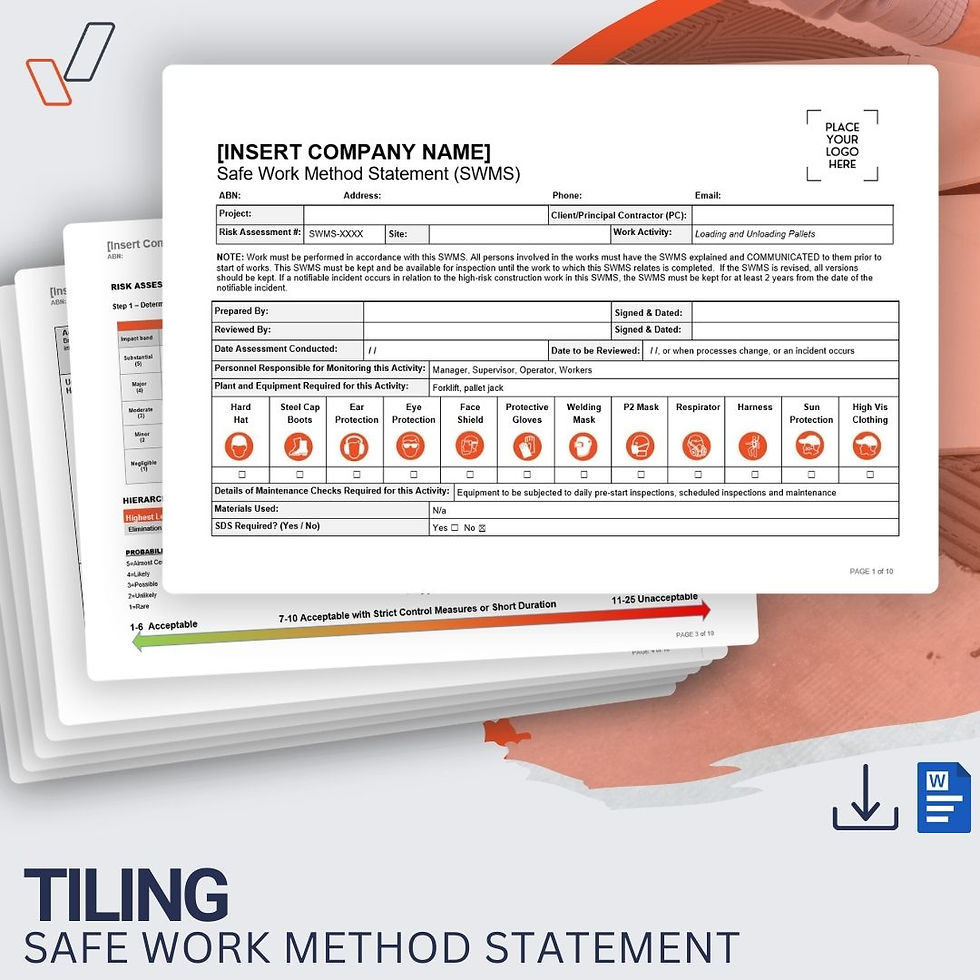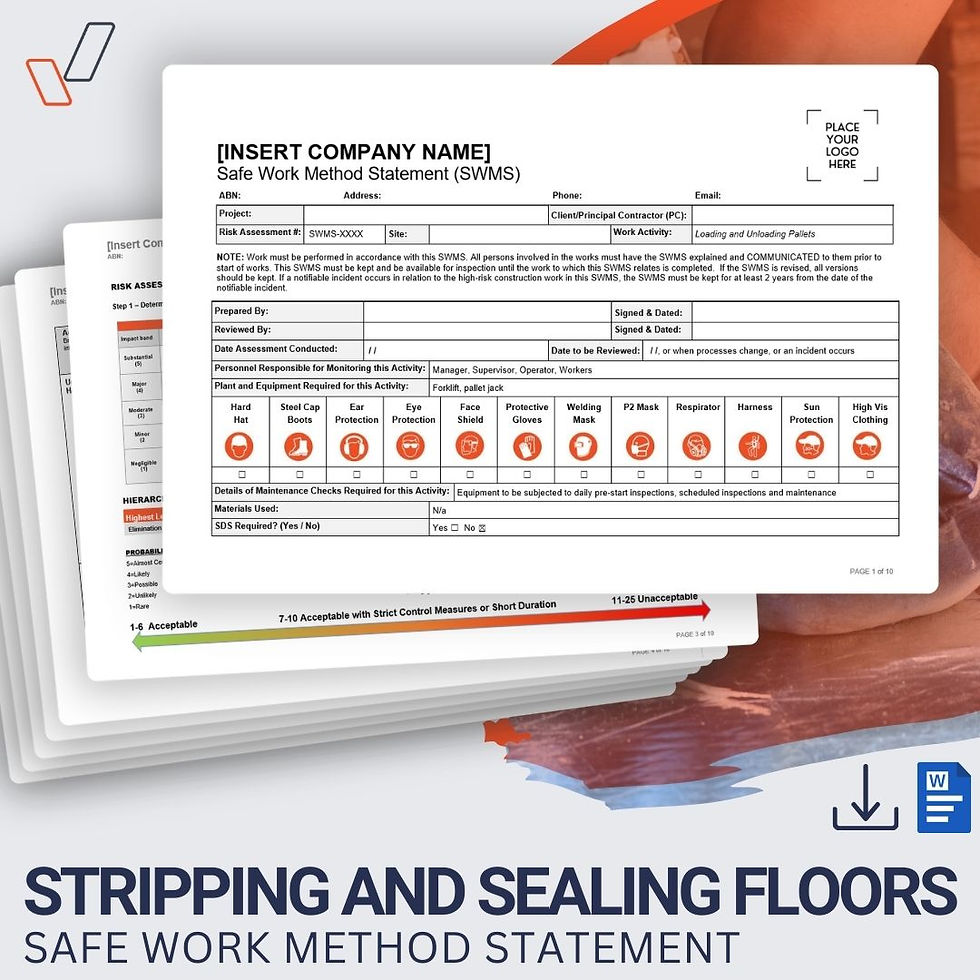This 7-page Rubbish Removal Safe Work Method Statement (SWMS) provides the typical safety controls and potential hazards associated with the safe handling, transfer, and disposal of rubbish in workplaces.
Developed by WHS experts, this pre-filled and ready-to-use template helps you meet your WHS obligations and maintain compliance across all Australian states and territories. It’s fully editable in Microsoft Word, allowing you to easily customise it with your company name, logo, and site-specific details.
Whether you're preparing for tenders, safety audits, or managing day-to-day operations, this SWMS provides a practical, structured, and compliant approach to managing rubbish removal safely.
Who This SWMS Is For
This SWMS is ideal for businesses and industries that handle waste removal, including:
Cleaning and facilities management providers
Construction and demolition companies
Commercial property managers
Warehousing and logistics operators
Industrial and manufacturing businesses
Councils and waste management contractors
What This SWMS Covers
This Rubbish Removal SWMS includes detailed safety controls, procedures, and risk management strategies, such as:
Planning and Preparation
Conducting site-specific risk assessments before starting work
Ensuring workers receive induction and task-specific training
Safe Handling of Rubbish
Correct manual handling techniques to avoid back and strain injuries
Using trolleys and bins safely without overloading
Wearing appropriate PPE, including gloves, high-vis clothing, and protective footwear
Transporting Waste
Moving rubbish to designated disposal areas safely
Avoiding impaction, crush injuries, or falls from bins and skips
Hazard Identification & Controls
Managing sharp objects, slip/trip hazards, and falling skip lids
Procedures for unexpected hazards or environmental changes
Emergency Procedures
First aid locations and firefighting equipment
Evacuation protocols and emergency contact numbers
Supervision & Compliance
Ongoing monitoring and random workplace inspections
Procedures for revising and communicating changes to the SWMS
What’s Included in Your Template
HRCW selection table
Risk assessment guidelines and risk rating calculator
Step-by-step safety procedures and controls
Possible hazards and detailed control measures
PPE requirements for rubbish removal
Plant and equipment list
References to relevant legislation, regulations, and codes of practice
Worker training and sign-off page
This Rubbish Removal SWMS is an invaluable tool for documenting your WHS processes quickly and effectively. Designed for easy editing and customisation, it fits seamlessly into your existing safety management system - helping you stay safe, compliant, and audit-ready.
Perfect for tenders, safety audits, and day-to-day operations, this template saves you time, reduces risk, and ensures your workers follow best-practice safety procedures.
Get your Rubbish Removal SWMS today and start using it instantly!
Rubbish Removal SWMS
We accept the following payment methods:
➡️ Pre-filled and ready to use
➡️ Created by WHS experts, aligned with Australian WHS legislation
➡️ Suitable for all Australian states and territories
➡️ Instant delivery via email.
➡️ Fully Editable (Microsoft Word Format).
➡️ Quickly add your logo and business details.
➡️ Easy customisation instructions included.
➡️ Pay once, use it as many times as you need.
➡️ 12 months free email & phone support.


















